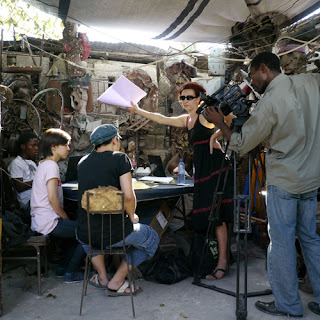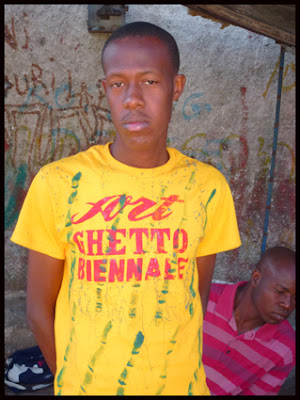Sebagian warga kota Jakarta bisa dipastikan pada tiap bulan Desember sampai Februari selalu mendapat “kutukan tiap tahun”. Apalagi jika bukan banjir!
Wilayah di 78 titik rawan banjir dan masyarakat kampung di Jakartalah yang
terkena dampak paling parah. Masyarakat yang lemah secara ekonomi dan akses politik.
Sepertinya mereka menghadapi evil circle.
Rantai yang sulit diputus dan buntunya jalan keluar.
Berbagai
alasan dituding sebagai biang kerok terjadinya banjir. Mulai dari curah hujan
yang tinggi, kurangnya daerah resapan air, pembangunan yang sewenang-wenang di
hulu sungai, kebiasaan buruk masyarakat membuang sampah disungai, birokrasi
pemerintah kota yang berbelit untuk segera bisa
menyelesaikan perbaikan infrastruktur dengan membangun tanggul-tanggul sungai.
Masalah
klasik yang berulang tiap tahun inilah yang menengok kita jauh ke negeri
seberang sana, ke Belanda. Ke negara kampiun soal penanganan Banjir. Tentu saja selain kita tetap berharap pemerintah kota menyederhanakan birokrasi dalam pengelolaan sungai dan kampanye besar- besaran pada masyarakat untuk
tidak “menyampah” di kali.
Baru-baru ini perusahaan desain Belanda bernama Waterstudio telah menciptakan serangkaian struktur
terapung darurat yang bisa dibaringkan di sepanjang tepi "kampoong banjir" yang siap di uji coba di seluruh dunia. Mungkin saja termasuk Jakarta dalam daftar tunggu.
Rangkaian struktur tersebut bisa disebut sebagai "Kota terapung", yang akan mengambang dalam empat unit komposisi yang mampu menyediakan makanan,
air, tempat tinggal, dan bahkan energi dalam keadaan darurat banjir.
Inovasi yang
luar biasa ini diganjar penghargaan "Architecture & Sea Level Rise" dari
Yayasan Jacques Rougerie. Desainernya menerima uang € 10.000. Cukup untuk
membangun prototipe kota mengambang pertama di Bangladesh.
"Kampoong
banjir" atau daerah yang berlangganan banjir, biasanya adalah lingkungan
miskin, sering dibangun dengan berbagai bahan yang ditemukan di sekitar lokasi dan seadanya.
Struktur ini bisa dengan mudah digeser, sepanjang
wilayah yang terendam air. Selama curah hujan yang tinggi masyarakat kampoong
memang seringkali dilumatkan oleh banjir, meninggalkan keluarga mereka yang menjadi
jauh lebih menderita.
Aplikasi anyar
dari desainer di Waterstudio akan
mengapungkan orang-orang di atas air dan menawarkan berbagai bentuk bantuan. Termasuk
unit taman, sebuah pengolahan limbah tanaman yang dapat menyediakan air minum
yang bersih dan limbah proses, unit perumahan yang juga dapat digunakan sebagai
pusat masyarakat kampoong, sekolah, atau klinik, dan tempat panel energi surya
untuk sementara.
Some
residents in the city of Jakarta in December to February have always got "the curse of new year." It was flood that comes every year. There
are 78 critical points of floods in Jakarta and kampoong communities most severely
affected by floods.
People who
are economically weak and do not have access to high-level political
decision-makers facing an evil circle. A chain of interconnected that it is
difficult to cut to find a way out.
Various
reasons blamed as the root problem causing flooding. Starting from the high
rainfall, lack of water catchment areas, urban development is not well planned
in upper river areas also the bad habits of the people in Jakarta who
throw garbage in the river.
The city
government contributed to the error by running “a complicated bureaucracy”
that has not been able to complete infrastructure improvements by building
river embankments and better drainage system.
Those classic
problems that happens every year was eventually turned our head to the Netherlands.
The country that provides an expertise in dealing with flooding.
Of course,
besides we still expect the city government to create a simple bureaucracy in
dealing with issues of river management in Jakarta and starting a massive campaign
on the people not to throw garbage in the river.
The Dutch
design firm Waterstudio has created a series of floating emergency structures
to lie along the edge of “wet slum kampoongs” all over the world. These
floating “City Apps” come in four units that can provide food, water, shelter,
and even energy in the event of a flooding emergency.
This incredible
innovation was recently awarded the “Architecture & Sea Level Rise” award
from the Jacques Rougerie Foundation, earning the designers 10,000 euros—enough
money to build the first prototype in Bangladesh
“Wet slum
kampoongs” are impoverished neighborhoods, often built with make-shift
materials, along a body of water. During periods of heavy rain, these
communities are frequently destroyed by flooding, leaving families even more
destitute.
Waterstudio‘s new City Apps would float on top of the water and
offer various forms of assistance. The units include a garden; a sewage
treatment plant that can provide clean drinking water and process waste; a
housing unit that can also be used as a community center, school, or clinic; and
a solar panel array to temporarily power the area.
source: news.bbc.uk
smh.au
TEDxWarwick - Koen Olthuis - Floating City Apps.flv
www.architizer.com
kompas.com
Kementerian Pekerjaan Umum Direktorat Jenderal Sumber Daya Air
http://waterstudio.nl
smh.au
TEDxWarwick - Koen Olthuis - Floating City Apps.flv
www.architizer.com
kompas.com
Kementerian Pekerjaan Umum Direktorat Jenderal Sumber Daya Air
http://waterstudio.nl











.jpg)
.jpg)
.jpg)
.jpg)
.jpg)

.JPG)































